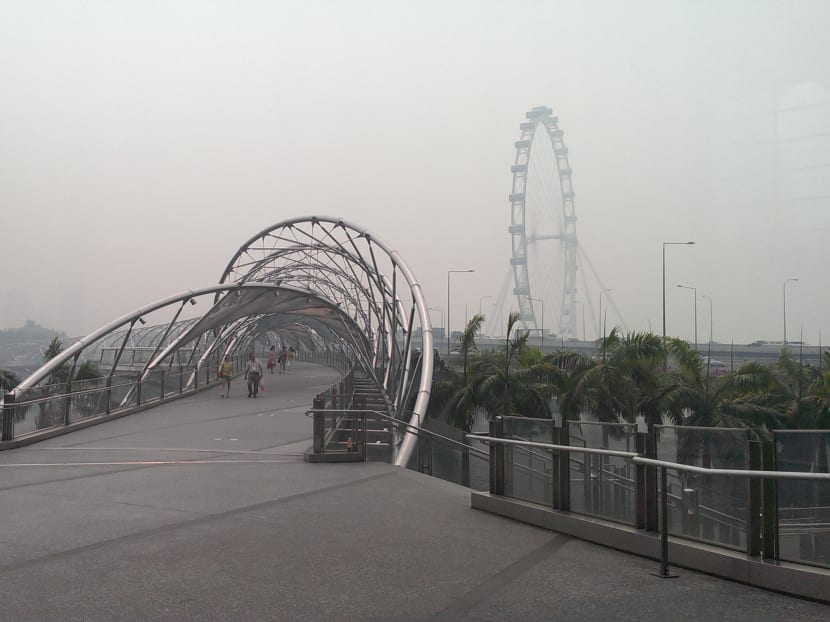Singaporeans in a haze over PSI readings
SINGAPORE — Frustration has been building among Singaporeans since the haze returned last Friday, with the National Environment Agency’s (NEA) three-hour Pollutants Standards Index (PSI) reading hitting new records this week, with no signs of any immediate relief.

A view of the Ritz Carlton and Singapore Flyer in the Marina Bay area on June 20, 2013. Photo: Xabryna Kek
UPDATED: 8.40pm, June 20, 2013
SINGAPORE — Frustration has been building among Singaporeans since the haze returned last Friday, with the National Environment Agency’s (NEA) three-hour Pollutants Standards Index (PSI) reading hitting new records this week, with no signs of any immediate relief.
And with many still in the dark about what how the hourly PSI updates are calculated, some have taken to venting their anger at the NEA, the Government and even the media online.
“I don’t think I can trust the readings,” @MinokoNg wrote on Twitter, while similar sentiments have been expressed on Facebook — one user wrote “Don’t distort the figures to mask the severity!” while another responded to a PSI update with “Dun lie please. We know common sense!”
The PSI was in the “hazardous” range for the first time at 10pm yesterday (June 19) with a reading of 321. But that record high was rewritten at 1pm today when the PSI hit 371.
A 3-HOUR AVERAGE
According to the NEA, the three-hour PSI readings on air quality are derived by averaging the data collected for the immediate past three hours, in order to provide additional information on air quality and reflect a better and more current situation.
The readings are also an average for the whole of Singapore, with 24-hour averages provided for the five regions.
The three-hour PSI reading might therefore not correspond with what one observes immediately after a PSI update is released on the hour.
Irritation in eyes, lungs, nose and on skin are just some of the effects of the recent poor weather conditions, but the focus online has been more on poor visibility — through shared photos of foggy neighbourhoods.
However, poor visibility does not necessarily correspond to higher particle levels in the air as other factors, such as the presence of mist and reflection from the sun, play in a role in how far one can see.
At a briefing this evening, the Government said it would move towards publishing 24-hour PSI and PM2.5 data on an hourly basis.
WHAT THE PSI MEASURES
The PSI is a uniform system of measuring the major air pollutants on a scale of 0 to 500, developed as an easy-to-understand system for the public through daily media reports.
The PSI is based on a scale devised by the United States’ Environmental Protection Agency (EPA).
Ambient air in Singapore is monitored through a telemetric network of air monitoring stations strategically located in different parts of Singapore.
Air pollutants such as sulphur dioxide, nitrogen dioxide, ozone, carbon monoxide are particulate matter called PM10, which is particulate matter of 10 microns or smaller in size, are used in the determination of the index.
The NEA also publishes 24-hour PM2.5 readings. The PM2.5 reading measures fine particles measuring 2.5 micrometres or less in diameter, as well as ultrafine particles, and soot.
The NEA’s 24-hour PSI reading as of 12pm today is 169-196, while the 24-hour PM2,5 reading at 12pm is 232-291.
The US’s current Air Quality Index (AQI) scale incorporates both PM10 and PM2.5 readings.






